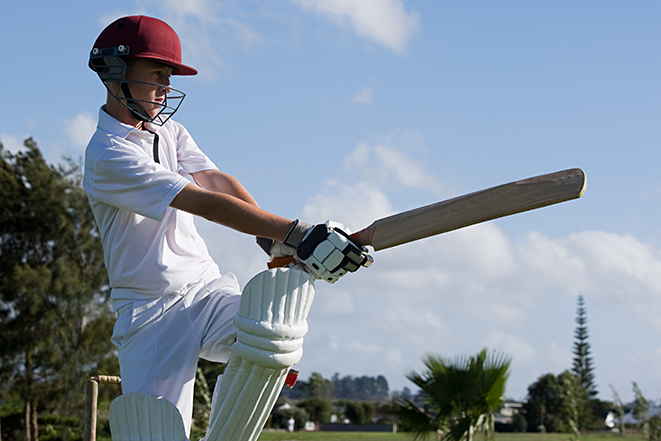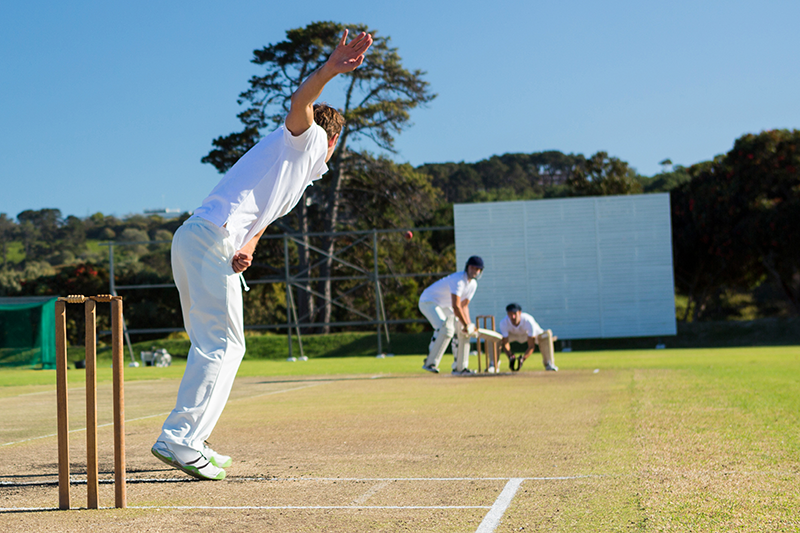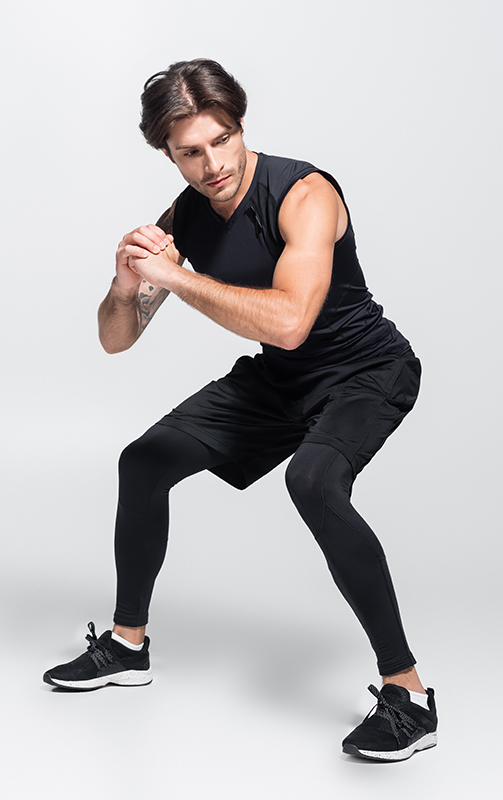Last Updated on: 11th October 2024, 11:23 am
Strength Training For Cricketers
Cricket Training Plan
Strength training is often overlooked in cricket as skill and technique are emphasised instead. However, building strength is crucial for performance. It helps to generate power in your shots, improves agility in the field, and reduces the risk of injuries. Cricket is a sport based on fast and powerful movements, so strength training should be essential.

Why strength training matters
Building functional strength means improved health and performance. A strength training plan helps you become more durable, powerful and efficient. Cricket players move their entire bodies when playing, so they need to make sure it’s up to the challenge.
Benefits of Strength Training
- Improved strength
- Increased speed
- Flexibility and mobility
- Agility
- Builds lasting endurance
Strength training is also essential for preventing injury. It will strengthen your muscles and help you become more flexible. All things that reduce the risk of injuring yourself.
Strength training for batsmen
Batting requires quick reflexes, good hand-eye coordination, and power. Batsmen use their whole body to perform fluid movements. Mobility, strength and aerobic fitness are great for batsmen. The muscles in your back, shoulders and biceps are all used when batting. You’ll also engage your core as you swing.
Strength training for bowlers
Bowling is a full-body movement but it focuses more on your dominant bowling arm. You’ll notice that your bowling arm has more strength and muscle tone due to the repetitive movement. You’ll want to strengthen your abdominals, obliques and back muscles because they’re used to twist your body as you sprint and release the ball. Also focus on rotator cuff strengthening, rotator strength and explosive movement. In fast bowling, the shoulder internally and externally rotates as the hip and core muscles stabilise and power the movement.
Strength training for fielders
Fielding needs agility, speed and quick reflexes to chase and catch the ball. Fielders perform a lot of abrupt stopping and explosive speed during a game. You’ll want to focus on lower body strength for speed and agility. Also, carry out exercises targeting your chest and shoulders to help with throwing.
Where to start?
You should start with a general plan and start working towards specific goals over time. Build up your strength before you move on to the harder movements. When hearing “strength training”, many people immediately think of intense weightlifting training. Cricketers don’t need to train as often as weightlifters and should aim for around 3 weekly sessions. This will allow for plenty of recovery time.
What professional players say
Many professional cricket players have discussed the importance of strength and conditioning for their performance. Some of them include:
- James Anderson: The English cricketer James Anderson is one of the sport’s top fast bowlers. He has emphasised the importance of strength and conditioning for fast bowlers. He believes that a high fitness level helped him maintain his pace, endurance, and overall performance.
- Virat Kohli: The Indian cricketer Virat Kohli is known for his rigorous fitness routine. He has often emphasised how important strength and conditioning have been for improving his performance on the field.
- Mithali Raj: The Indian women’s cricket team captain Mithali Raj acknowledges the role of strength and conditioning in cricket. She has spoken about how focusing on fitness can directly impact a player’s performance on the field.
- Ellyse Perry: Australian cricketer Ellyse Perry is considered one of the best female cricketers in the world. She has stressed the importance of strength and conditioning in enhancing her skills and helping her cope with the demands of playing cricket at the highest level.
- AB de Villiers: The former South African cricketer AB de Villiers was well aware of the importance of fitness and conditioning. He has spoken about how maintaining a high level of fitness aided his agility and endurance.
Example Exercises
Squats
- Benefits: Strengthens leg muscles, which is essential for explosive movements during batting and fielding.
- Sets: 3 sets of 8-12 repetitions.
- Progression: Increase resistance by adding weight or performing single-leg squats for an added stability challenge.

Deadlifts
- Benefits: Develops lower back, glutes, and hamstrings, which is crucial for power generation in batting and agility in fielding.
- Sets: 3 sets of 6-10 repetitions.
- Progression: Increase weight gradually as strength improves, and incorporate Romanian deadlifts for hamstring focus.
Push-ups
- Benefits: Builds upper body strength, which is important for powerful throwing and stability during shots.
- Sets: 3 sets of 10-15 repetitions.
- Progression: Elevate feet or perform diamond push-ups to increase difficulty and target different muscle groups.
Planks
- Benefits: Strengthens core muscles, which is essential for balance, stability, and injury prevention.
- Sets: 3 sets, hold for 30-60 seconds.
- Progression: Increase duration or incorporate plank variations for an added challenge.
Example Strength Training Plan
Your strength training plan should be designed to improve your performance on the field and help minimise the risk of injury. It should consist of around 2-3 sessions per week so you have time to recover. This also allows you to focus on other areas of fitness and cricket skills as well. The different sessions should target key muscle groups and movement patterns that you’ll need during play.
Session 1: Lower Body Focus
- Squats
- Sets: 3 sets x 8-10 reps
- Deadlifts
- Sets: 3 sets x 6-8 reps
- Lunges
- Sets: 3 sets x 10 reps (each leg)
- Calf Raises
- Sets: 3 sets x 12-15 reps
Session 2: Upper Body Focus
- Push-ups
- Sets: 3 sets x 10-15 reps
- Pull-ups or Bent-over Rows
- Sets: 3 sets x 6-10 reps
- Shoulder Press
- Sets: 3 sets x 8-10 reps
- Tricep Dips
- Sets: 3 sets x 10-12 reps
Session 3: Full Body Strength and Core
- Planks
- Sets: 3 sets, hold for 30-60 seconds
- Russian Twists
- Sets: 3 sets x 12-15 reps (each side)
You want to tailor your strength training to suit your needs, so there isn’t a one-size-fits-all approach. The best thing to do is talk to your coach about where you should focus. They might be able to suggest specific exercises that will help with your goals for the season.
Tips for Success
- Use Proper Form: You need to maintain proper form for all exercises. This maximises their effectiveness and minimises the risk of injury.
- Increase Intensity Gradually: Progressively overload your muscles by increasing resistance, repetitions, or difficulty of exercises as your strength improves.
- Listen to Your Body: Pay attention to any signs of fatigue or discomfort. Adjust the intensity or volume to avoid pushing yourself.
- Remember to Rest: Allow at least 48 hours of rest between strength training sessions to promote recovery and muscle growth.
- Stay Consistent: Consistency is key to seeing positive results. Keep going at a steady pace and you’ll see the benefits.
Cricket Training Sorted
Adding a few sessions of strength training into your pre-season training will definitely set you up for a good season. You’ll start with more power and speed, which will help you stay ahead of your opponents.
Make the most out of your training by getting a new training kit. Browse our range of training wear and elevate your training this year. Grab some of our compression training tops and training bottoms. Or a trusty pair of shorts and a training t-shirt. We have plenty of options available.
Pendle Recommendations
Tags: Cricket, cricket coaching, cricket drills, cricket exercises, cricket training, cricket training drills, strength training







